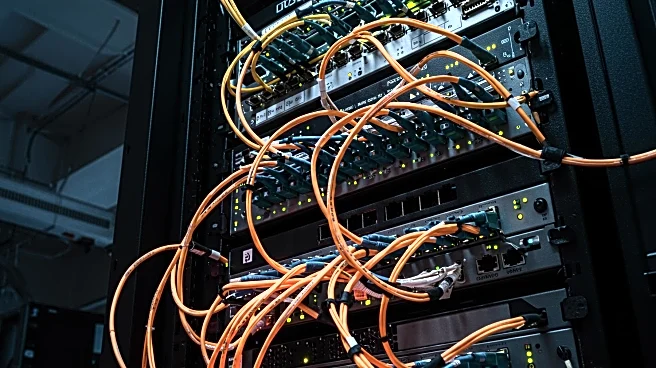What's Happening?
The UK's full-fibre broadband rollout is approaching 80% coverage, with independent research indicating significant progress in fibre-to-the-premises (FTTP) networks. As of Q2 2025, FTTP coverage reached approximately 77.8% of UK premises, driven largely by Openreach, which added 980,000 full-fibre premises. The transition from copper to fibre networks continues, with non-fibre networks covering fewer premises. However, overbuild remains a concern, with millions of premises having access to multiple FTTP providers. Regional disparities in deployment persist, with Belfast leading in FTTP availability. The rollout reflects ongoing efforts to ensure equitable access across urban and rural areas.
Why It's Important?
The expansion of full-fibre broadband is crucial for enhancing digital infrastructure in the UK, supporting faster internet speeds and improved connectivity. This development is vital for businesses, educational institutions, and remote workers, facilitating economic growth and innovation. The competition among FTTP providers can drive improvements in service quality and pricing, benefiting consumers. However, the issue of overbuild highlights challenges in resource allocation and market dynamics, which could impact smaller providers and lead to inefficiencies.
What's Next?
Continued investment in fibre infrastructure is expected, with efforts to address regional disparities and ensure comprehensive coverage. Policymakers and industry stakeholders may focus on strategies to manage overbuild and promote fair competition. The upcoming Connected Britain event in September 2025 will provide further insights into the future of UK fibre and the evolution of the altnet model.
Beyond the Headlines
The fibre rollout raises questions about digital equity and access, particularly in rural areas. Ensuring that all communities benefit from high-speed internet is a key challenge, requiring collaboration between government and industry. The shift to fibre networks also has environmental implications, as it may reduce energy consumption compared to legacy copper networks.












